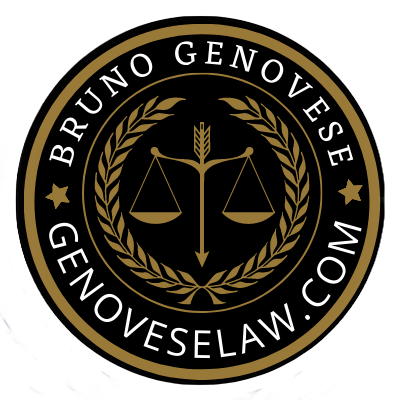Introduction
If you’re considering selling or exiting a French leaseback property, here’s an overview of strategies and potential obstacles to help you navigate this process.
1. Understanding the Challenges of Selling a French Leaseback Property
Selling a French leaseback property is not as straightforward as selling a traditional investment property. Leaseback properties are often bound by long-term commercial leases with property management companies, which complicates resale efforts. These leases are designed to provide consistent rental income to the owner but can also limit flexibility when trying to sell.
Challenges of Selling Leaseback Properties:
- Restricted Use and Buyer Pool: Leaseback properties are often tied to specific tourism or hospitality uses, limiting the buyer pool to investors rather than individual buyers.
- Ongoing Lease Obligations: Buyers must take on the existing lease, which requires them to honor the rental contract with the property management company.
- Reduced Value on the Open Market: Leaseback properties are sometimes resold at a discount due to the rental obligations and restrictions, especially if the property is no longer in a prime location or if demand has waned.
While these challenges can deter potential buyers, there are several strategies owners can use to improve the chances of a successful sale or exit.
2. Resale Strategies: Options for Selling a Leaseback Property
There are two main approaches to selling a French leaseback property: selling with the lease intact or negotiating an early termination. Each option has its pros and cons and may require the cooperation of the property management company and potential buyers.
A. Selling with the Lease Intact
In this approach, the lease remains in place, and the buyer assumes the property with the existing rental agreement. This is often the most straightforward option for exiting a leaseback arrangement, as it maintains the income stream associated with the property.
Pros of Selling with the Lease Intact:
- Continuous Rental Income for the Buyer: Buyers looking for rental income may be attracted to the existing lease, which provides a guaranteed return.
- Simpler Transaction: Selling with the lease intact often requires fewer legal adjustments, making it simpler than early termination.
Cons of Selling with the Lease Intact:
- Limited Buyer Pool: The buyer pool is typically limited to investors who are comfortable with lease obligations.
- Possible Price Discount: Due to the restrictions and obligations, the property may need to be priced lower to attract buyers.
Example Approach:
Market the property as an investment opportunity with steady rental income. Highlight the benefits of the lease agreement and target buyers looking for passive rental returns rather than private use.
B. Negotiating Early Lease Termination
Another option is to negotiate with the property management company for an early termination of the lease. This approach allows the owner to sell the property without the lease restrictions, potentially opening it up to a broader market that includes individual buyers.
Pros of Early Termination:
- Increased Buyer Pool: Without lease restrictions, the property can appeal to private buyers interested in using it as a vacation home or permanent residence.
- Potentially Higher Resale Value: Properties sold without lease obligations can often command a higher price, as they offer greater flexibility.
Cons of Early Termination:
- Negotiation Costs and Penalties: Early termination typically involves negotiation fees and potentially steep penalties for breaking the lease.
- Uncertain Outcome: The property management company may refuse to negotiate or may set high fees that reduce the financial benefit of this option.
Example Approach:
Contact the property management company to discuss the terms of early termination, including any penalties or fees. Weigh these costs against the potential increase in market value to determine whether this option is financially viable.
3. Exit Strategies Beyond Direct Resale
For owners who cannot or prefer not to sell immediately, there are additional exit strategies to consider, including subletting, renegotiating lease terms, or exchanging the property. These options allow owners to retain some control over the property while mitigating ongoing lease obligations.
A. Subletting for Increased Flexibility
Subletting allows owners to lease the property to a secondary tenant, generating income that may offset maintenance costs and management fees. While subletting doesn’t remove the lease obligation, it can be a useful temporary measure if resale isn’t immediately possible.
Best Practices for Subletting:
- Review Lease Terms: Ensure the lease allows subletting or get explicit permission from the property management company.
- Short-Term Rentals for Seasonal Demand: In tourist-heavy areas, short-term rentals can generate higher income during peak seasons.
Example Approach:
Sublet the property on a seasonal basis to vacationers, which can generate income while you explore long-term exit options.
B. Renegotiating Lease Terms
In some cases, owners can negotiate with the property management company to adjust the lease terms. This could involve reducing the lease duration, lowering fees, or introducing flexible conditions that make the property more appealing to buyers.
Best Practices for Renegotiation:
- Consult a Lawyer: Work with a legal expert to negotiate lease terms that align with your goals and improve the property’s resale appeal.
- Targeted Adjustments: Focus on adjustments that increase marketability, such as shorter lease terms or reduced fees for buyers.
Example Approach:
Work with a French lawyer who can negotiate favorable lease terms that enhance the property’s appeal without incurring significant penalties.
C. Property Exchange
Some leaseback owners have found success in exchanging their property for another asset or a property without restrictive lease terms. While less common, this can be a creative way to exit the investment without a traditional sale.
Best Practices for Property Exchange:
- Find a Compatible Exchange Partner: Work with real estate agents or online platforms that facilitate property exchanges.
- Match Value and Lease Terms: Ensure both parties understand the terms and potential liabilities involved in the exchange.
Example Approach:
Explore online property exchange platforms to identify owners interested in exchanging assets or properties that offer more flexibility than the current leaseback arrangement.
4. How a French Lawyer Can Help You Navigate Leaseback Exit Strategies
Navigating French leaseback agreements can be complex, especially when it comes to resale or early termination. A French lawyer with experience in leaseback law can offer invaluable support, helping owners understand their options, negotiate favorable terms, and avoid common pitfalls.
Advantages of Working with a French Lawyer:
- In-Depth Lease Analysis: French lawyers are familiar with the legal intricacies of leaseback contracts and can identify key terms that may affect resale or exit.
- Negotiation Expertise: French lawyers can negotiate with property management companies to reduce penalties, adjust terms, or approve early terminations on favorable conditions.
- Clear Exit Strategy Guidance: With a French lawyer, owners receive expert guidance on the most viable exit strategy, whether through resale, renegotiation, or exchange.
Example of Legal Support:
A French lawyer can assess the financial and legal impact of each exit strategy, offering a realistic view of potential outcomes and helping owners make informed decisions.
5. Planning for the Future: Considerations for Potential Buyers
If you’re considering investing in a French leaseback property, it’s essential to understand the resale and exit options available. Consulting with a French lawyer before purchasing can provide insight into long-term obligations, enabling you to make an informed decision about the potential challenges and benefits of leaseback ownership.
Questions to Ask Before Investing:
- What are the lease terms and renewal options?
- Is early termination possible, and what penalties apply?
- How has the property’s resale performance been for other owners?
Conclusion
French leaseback properties can be lucrative investments but often come with strict lease obligations that complicate resale or exit efforts. For owners seeking to sell or exit, exploring options like selling with the lease intact, negotiating early termination, or subletting can provide viable solutions.
Working with a French lawyer offers a distinct advantage, providing expertise in leaseback law, personalized negotiation support, and guidance on strategic exits. By consulting with a legal expert, owners can approach their French leaseback investment with confidence, navigating the complexities of resale or exit and optimizing their outcomes.
French leaseback properties have long been marketed as a convenient, hands-off investment that offers rental income, tax benefits, and guaranteed occupancy. However, for many investors, the reality of French leaseback ownership comes with challenges, especially when it’s time to resell or exit the agreement. With complex contracts and strict tenant protections, exiting a French leaseback property requires strategy, patience, and a clear understanding of options.
If you’re considering selling or exiting a French leaseback property, here’s an overview of strategies and potential obstacles to help you navigate this process.





